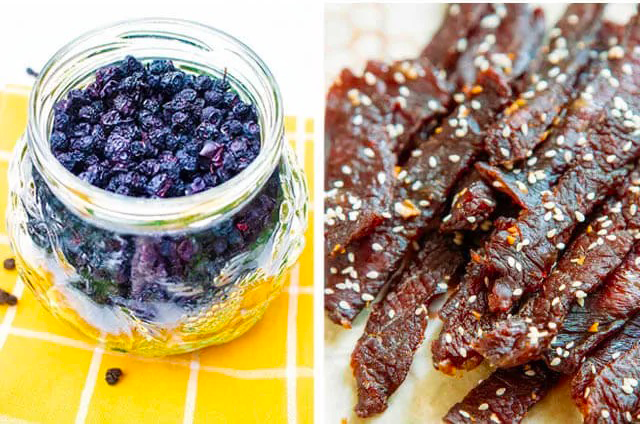
Content Menu
● Introduction to Low Vacuum Dehydration Machines
>> Operational Principle
● Key Benefits of Low Vacuum Dehydration Machines
>> 1. Preservation of Nutritional Value
>> 2. Energy Efficiency
>> 3. Improved Product Quality
>> 4. Reduced Processing Time
>> 5. Cost-Effectiveness
● Applications of Low Vacuum Dehydration Machines
● Comparison with Other Drying Methods
>> Microwave Vacuum Drying
>> Freeze-Drying
>> Spray Drying
● Customization and OEM Services
● Maintenance and Troubleshooting
● Future Developments and Trends
● Additional Considerations for Food Safety
● Integration with Other Technologies
● Environmental Impact
● Conclusion
● Frequently Asked Questions
>> 1. What is the primary advantage of using a low vacuum dehydration machine?
>> 2. How does a low vacuum dehydration machine compare to microwave vacuum drying in terms of cost?
>> 3. Can low vacuum dehydration machines be used for drying pharmaceutical ingredients?
>> 4. How does the energy efficiency of low vacuum dehydration machines compare to traditional drying methods?
>> 5. What types of food products are best suited for low vacuum dehydration?
● Citations:
In the realm of food processing, dehydration is a crucial step that not only extends the shelf life of products but also enhances their quality and nutritional value. Among various dehydration techniques, low vacuum dehydration machines have emerged as a preferred choice due to their efficiency, cost-effectiveness, and ability to preserve sensitive compounds. This article delves into the key benefits of using a low vacuum dehydration machine, exploring its applications, operational principles, and advantages over traditional drying methods.

Introduction to Low Vacuum Dehydration Machines
Low vacuum dehydration machines are designed to remove moisture from food products under reduced pressure conditions. This process allows water to evaporate at lower temperatures, which is particularly beneficial for heat-sensitive materials. The technology is widely used in the food industry for drying fruits, vegetables, herbs, and other products where preserving nutritional content and flavor is paramount.
Operational Principle
The operational principle of a low vacuum dehydration machine involves creating a vacuum environment within a sealed chamber. Inside this chamber, the product is heated gently, allowing moisture to evaporate at temperatures significantly lower than those required in atmospheric conditions. This method ensures that the product's quality and nutritional integrity are maintained throughout the drying process.
Key Benefits of Low Vacuum Dehydration Machines
1. Preservation of Nutritional Value
One of the primary advantages of using a low vacuum dehydration machine is its ability to preserve the nutritional value of food products. By drying at lower temperatures, these machines prevent the degradation of vitamins and other heat-sensitive nutrients, ensuring that the final product retains its original nutritional profile.
2. Energy Efficiency
Low vacuum dehydration machines are more energy-efficient compared to traditional drying methods. They achieve faster drying times without consuming excessive energy, which not only reduces operational costs but also contributes to a more sustainable food processing environment.
3. Improved Product Quality
The controlled environment of a low vacuum dehydration machine ensures uniform drying, which enhances the overall quality of the final product. This uniformity is crucial for maintaining consistent texture and flavor, making the products more appealing to consumers.
4. Reduced Processing Time
Low vacuum dehydration machines significantly reduce processing time compared to conventional methods like air drying. This rapid drying capability allows for higher production volumes and quicker turnaround times, making it ideal for large-scale food processing operations.
5. Cost-Effectiveness
The efficiency and speed of low vacuum dehydration machines lead to cost savings in both energy consumption and labor. Additionally, the preservation of product quality reduces waste and the need for reprocessing, further enhancing the cost-effectiveness of this technology.
Applications of Low Vacuum Dehydration Machines
Low vacuum dehydration machines are versatile and can be applied across various sectors of the food industry:
- Fruits and Vegetables: Ideal for drying fruits and vegetables while preserving their nutritional content and flavor.
- Herbs and Spices: Maintains the potency and aroma of herbs and spices by drying them at low temperatures.
- Pharmaceuticals: Used in the drying of pharmaceutical ingredients where preserving active compounds is critical.

Comparison with Other Drying Methods
Microwave Vacuum Drying
Microwave vacuum drying combines microwave energy with vacuum conditions to achieve rapid and uniform heating. This method is highly efficient but requires specific equipment and can be more expensive than traditional low vacuum dehydration.
Freeze-Drying
Freeze-drying involves freezing the product and then removing moisture under vacuum. While effective for preserving nutrients, it is energy-intensive and slower compared to low vacuum dehydration.
Spray Drying
Spray drying involves spraying the product into a hot gas stream, causing rapid evaporation. This method is fast but can be harsh on heat-sensitive materials and may not preserve nutrients as effectively as low vacuum dehydration.
Customization and OEM Services
For companies looking to integrate low vacuum dehydration technology into their production lines, customization and OEM services are available. These services allow businesses to tailor the machines to their specific needs, ensuring compatibility with existing infrastructure and optimizing performance for their unique products.
Maintenance and Troubleshooting
Proper maintenance is essential for extending the lifespan of low vacuum dehydration machines. Regular checks on vacuum seals, heating elements, and air filters can prevent common issues such as reduced vacuum pressure or uneven heating. Troubleshooting guides and technical support are typically provided by manufacturers to help operators address any problems that may arise.
Future Developments and Trends
As technology advances, low vacuum dehydration machines are likely to become even more efficient and environmentally friendly. Future developments may include the integration of renewable energy sources, advanced control systems for precision temperature management, and expanded applications in emerging industries such as biotechnology.
Additional Considerations for Food Safety
When using low vacuum dehydration machines, ensuring food safety is paramount. This involves maintaining a clean environment, adhering to proper sanitation protocols, and monitoring the drying process to prevent contamination. Regular testing for moisture levels and microbial activity can help ensure that the final product meets food safety standards.
Integration with Other Technologies
Low vacuum dehydration machines can be integrated with other technologies to enhance their functionality. For example, combining them with advanced packaging systems can ensure that dried products are immediately sealed to prevent rehydration and maintain freshness.
Environmental Impact
The environmental impact of low vacuum dehydration machines is generally positive due to their energy efficiency and reduced waste generation. However, manufacturers are continually working to improve sustainability by using eco-friendly materials and reducing energy consumption further.
Conclusion
Low vacuum dehydration machines offer a range of benefits that make them an attractive option for food processors seeking to enhance product quality while reducing costs. Their ability to preserve nutritional value, improve energy efficiency, and reduce processing time positions them as a key technology in modern food production. As the demand for high-quality, sustainably produced food products continues to grow, the role of low vacuum dehydration machines will become increasingly important.

Frequently Asked Questions
1. What is the primary advantage of using a low vacuum dehydration machine?
The primary advantage is its ability to preserve the nutritional value of food products by drying at lower temperatures, which prevents the degradation of heat-sensitive nutrients.
2. How does a low vacuum dehydration machine compare to microwave vacuum drying in terms of cost?
Low vacuum dehydration machines are generally more cost-effective than microwave vacuum drying systems, which require specialized equipment and can be more expensive to operate.
3. Can low vacuum dehydration machines be used for drying pharmaceutical ingredients?
Yes, low vacuum dehydration machines are suitable for drying pharmaceutical ingredients because they can maintain low temperatures, preserving active compounds.
4. How does the energy efficiency of low vacuum dehydration machines compare to traditional drying methods?
Low vacuum dehydration machines are more energy-efficient than traditional methods like air drying, as they achieve faster drying times with lower energy consumption.
5. What types of food products are best suited for low vacuum dehydration?
Fruits, vegetables, herbs, and spices are well-suited for low vacuum dehydration due to the method's ability to preserve nutritional content and flavor.
Citations:
[1] https://loyal-machine.com/blog/the-revolutionary-microwave-vacuum-dryer/
[2] https://foodtechprocess.com/blog/post/11_vacuum-drying-and-its-benefits-in-food-production
[3] https://www.dotbglobal.com/product/vacuum-low-temperature-frying-dehydration-machine/
[4] https://www.indiamart.com/proddetail/low-vacuum-dehydration-machine-lvdh-22419894362.html
[5] https://hypureoil.webflow.io/post/low-temperature-vacuum-dehydration-unit
[6] https://www.everestvacuum.com/en-us/blogs/role-of-vacuum-in-food-industry
[7] https://www.liasotech.com/low-vacuum-dehydration-machine-lvdh
[8] https://www.enwave.net/about/rev/
[9] https://www.gdprocessdesign.com/news/why-invest-in-vacuum-frying-and-drying-technology/
[10] https://kleenoilindia.com/product/low-vacuum-dehydration-filtration-system/
[11] https://greenthumbdepot.com/blogs/guides/vacuum-drying-vs-freeze-drying
[12] https://community.waring.com/blog/p/13or1/the-remarkable-benefits-of-adding-a-food-dehydrator-to-your-kitchen-arsenal
[13] https://www.rocker.com.tw/en/application/vacuum_drying/
[14] https://kerone.com/blog/advantages-and-common-applications-of-vacuum-drying/
[15] https://www.youtube.com/hashtag/dehydrationmachine
[16] https://www.oilfiltersystems.com/vacuum-dehydration-unit.html
[17] https://www.newfoodmagazine.com/article/9153/application-of-vacuum-in-the-food-industry/
[18] https://www.foodengineeringmag.com/articles/87399-dehydration-redux
[19] https://www.youtube.com/watch?v=A5Nf2P7-nbU
[20] https://www.youtube.com/watch?v=Zl4wTcCPJu0
[21] https://engineering.stackexchange.com/questions/58343/designing-a-microwave-based-vacuum-dehydration-system











